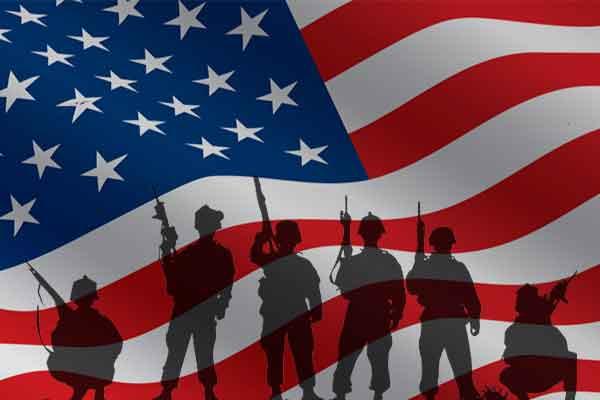
A joint resolution was adopted and approved by Congress on August 7, 1964, enacted on August 10, giving President Johnson the authority to fight.
News Time
Aggression and adventures for the United States, standing on the brink of a new war in the Middle East, have been a hot pursuit in almost every age. Not long ago, the late American diplomat (Richard Holbrooke) said that America does not fight to win wars, there are goals that have to be achieved. That is, defeat or victory in war does not matter to the United States. The threat posed by a new international war after a senior U.S. military commander was killed in Iraq by the United States in the past has not been averted. And there is still concern around the world. But Curine points out that this situation had no significant impact on the US establishment. This is the attitude of American officials in almost all wars they fought.
The United States did not participate in World War I, but in its last days it provided assistance to Britain. America’s victory over the conquered United States by throwing atom bombs at two Japanese cities in World War II continues. But there have been times in history that the United States has faced wars and wars in spite of the destruction of all military power and rivals. There was a similar situation in 1973 when the United States signed the Vietnam Agreement today.
The current Vietnam was divided into two parts, North and South Vietnam, which were interdependent until 1973. North Vietnam had the support of the Soviet Union, China and other communist allies South Vietnam supporters were the United States, South Korea, Thailand and other anti-Communist countries. At that time an armed group called the Viet Cong was mobilizing raids against anti-communist forces. Then there was an incident that brought America directly into the war. Vietnamese warships sail toward the US Navy during a patrol on August 2, 1964 at which point US troops opened fire for the warning, and Vietnamese ships began bombing ships on the other side. To which the US Navy also responded, some soldiers were wounded. On August 4, the US Navy complained that Vietnamese combat boats were chasing the ships once again. This complaint came to the White House when Lyndon B. Johnson was president. A joint resolution was adopted and approved by Congress on August 7, 1964, enacted on August 10, giving the president (Lyndon B. Johnson) the authority to fight. Within a few days after the resolution was approved, US troops landed in Vietnam, initially numbering in the thousands, but a few days later reached 1.5 million. The main target of the United States was North Vietnam, because South Vietnam was its ally.
A very tense war was launched by American troops, and within a few days, it seemed that the United States would soon achieve its goal. But there were still two figures in North Vietnam that could turn the whole game. The General Giáp and Ho Chi Minh were the men who chewed on the French during a long war from 1946 to 1955 and had to be discredited. The two landed in the field once again. This combination of politics and tactics led to American ambitions leading to the wall. He was very skilled in guerrilla warfare, and his plans led to frequent attacks on US forces. The words of General Jayap became very popular when America’s courage seemed to fade you kill our 10 men, we’ll kill one, let’s see how long you fight, you’re tired General Giáp was also called (Red Napoleon).
North Vietnam and Vietnam prepared a vigorous attack, with the capital Saigon being their target. On the 1st of January 1968, the country was on holiday, 36 provincial capitals and six major cities were suddenly attacked and the capital occupied at the same time. Which shook the whole country even though the US military and the South Vietnamese army retaliated with retaliation. However, this proved the White House’s claims that success was not far off.
Opposition within the United States:
In the late 60s, relatives of US troops began to question what was the outcome of this war? At that time a second term was run by the President Lyndon B. Johnson, who resigned in 1969 on questions raised by the public circles and the opposition. After him Richard Nixon took over who had a different view of the war. Although the war continued in their time, they wanted to cripple it. Ho Chi Minh passed away in 1969 but his successors continued to fight. The war killed nearly 12 million North Vietnamese soldiers and three and a half million US and coalition troops.
Negotiations begin:
It was time that the United States wanted to get rid of the war. So the conversation began in 1969 and the parties sat down in Paris. The chain continued to move forward with time, but in the meantime there was no peace and war continued. Richard Nixon efforts continued and in 1973 the deal was reached.
Paris Peace Agreement:
The agreement signed in Paris 47 years ago today is called Paris Peace Accords. The US, Vietnam, North and South Vietnam participated. By the way, the deal contained 12,10 points, but the main point was that the United States would withdraw troops and Vietnam would proceed as an independent republic. The United States evacuated all territories in a short period of time and Vietnam released its captives. Now the Vietnamese capital is named after Ho Chi Minh.



